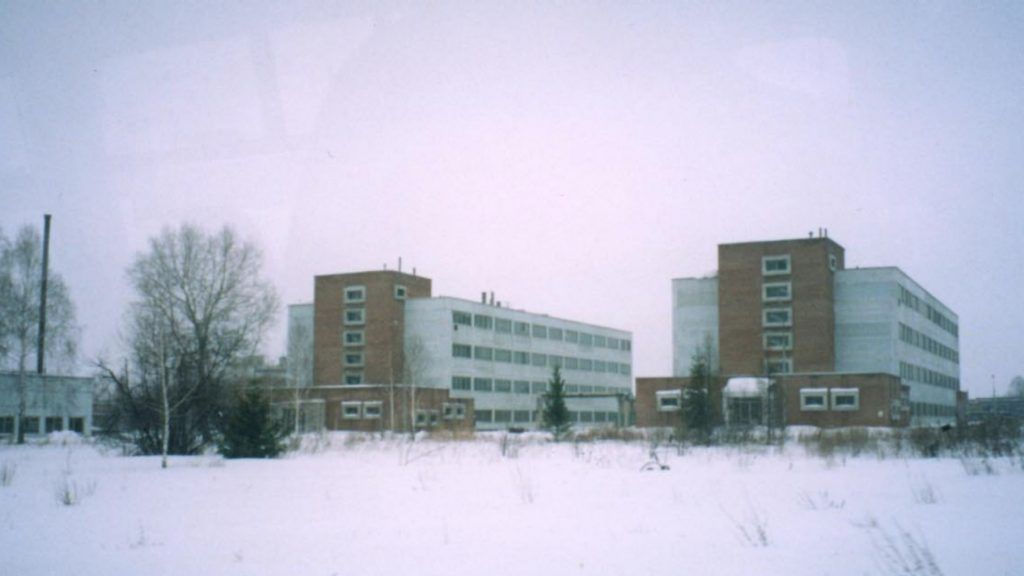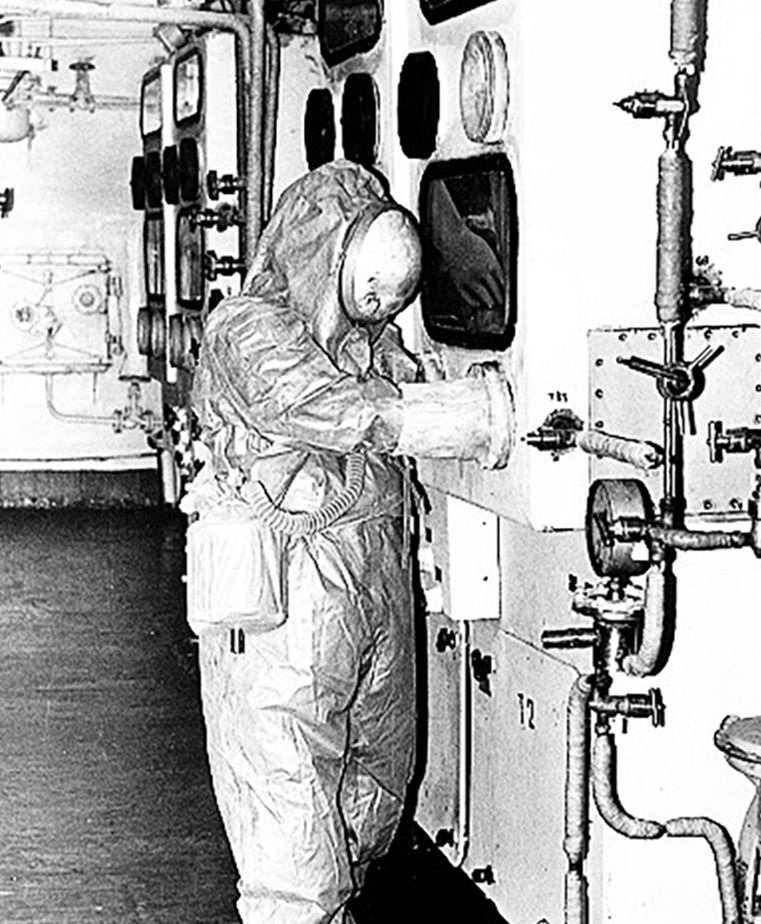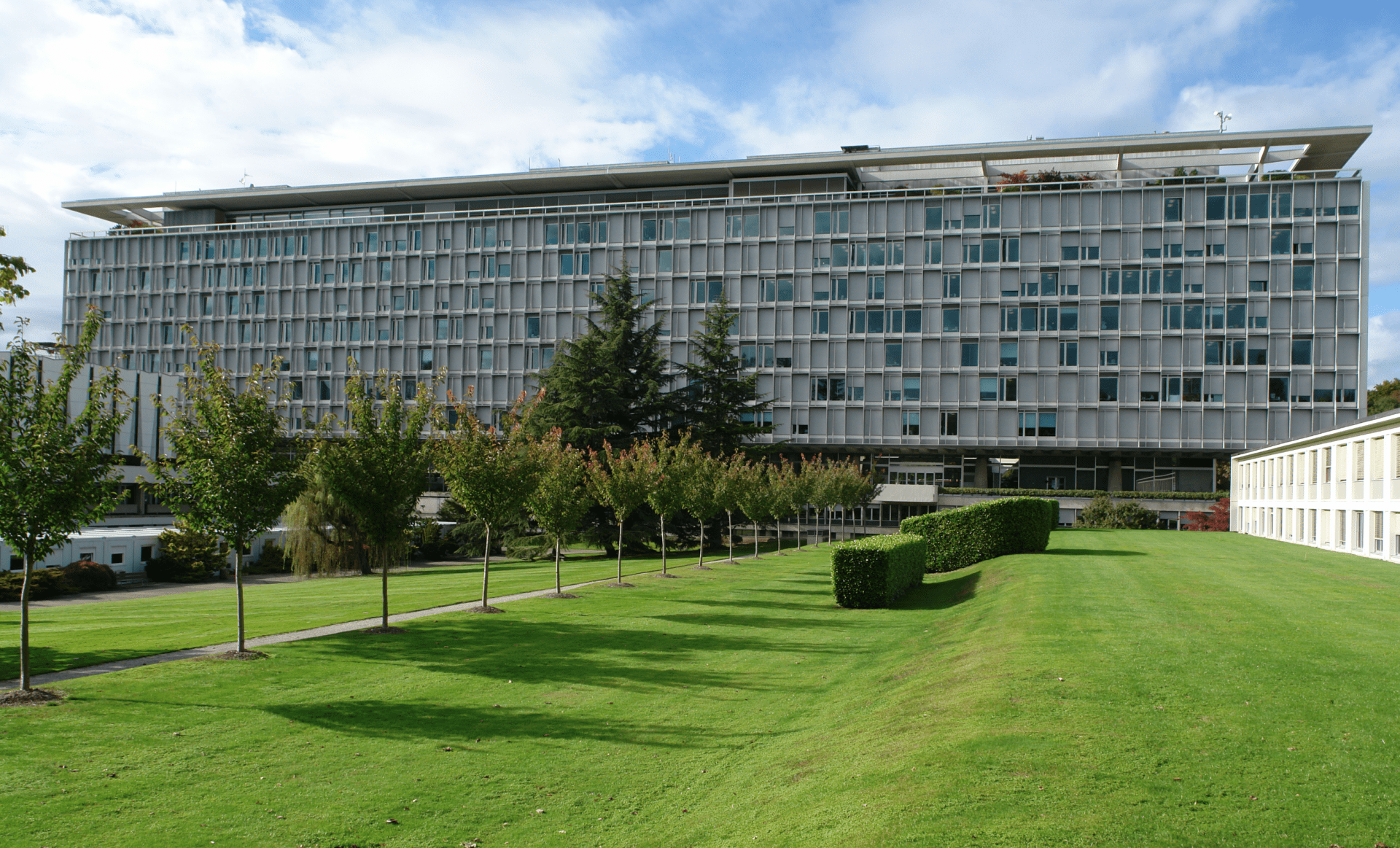What happened after an explosion at a Russian disease research lab called VECTOR?
By Filippa Lentzos | November 27, 2019
 The Russian VECTOR research center maintains one of just two repositories of smallpox-causing virus in the world. Credit: US Government Accountability Office.
The Russian VECTOR research center maintains one of just two repositories of smallpox-causing virus in the world. Credit: US Government Accountability Office.
At a huge Soviet-era virology campus in Siberia called VECTOR, a sudden, unexpected explosion in September blew out the windows and set parts of a building ablaze. Around the world, people sat up and took notice. Global public health and security officials were concerned the explosion might have affected labs holding dangerous viruses. Biosecurity experts questioned whether it was a deliberate attack, and international security analysts and biodefense experts deliberated how to read the situation—acutely aware that biosafety breaches in a similar facility 40 years ago had caused a large and deadly anthrax outbreak that eventually exposed the Soviet Union’s prohibited biowarfare activities.
From media reports on the explosion, it was unclear exactly which parts of VECTOR, and which labs, had been affected by the explosion and fire. Of particular concern was the facility housing the unique smallpox-causing variola virus, one of just two such repositories in the world, both routinely monitored by the World Health Organization. Following the media reports, VECTOR management responded to queries from the World Health Organization with reassurance that the smallpox repository had not been affected, according to an organization spokesperson. From the organization’s perspective, there was no need to follow up with a visit or ad hoc inspection.
The World Health Organization-led international inspection team last visited VECTOR in February 2019, and while the report from the inspection is still in review, previous inspection reports have found that VECTOR meets international standards of biosafety and biosecurity for smallpox research. The unit visits VECTOR and its US counterpart, the smallpox repository at the Centers for Disease Control and Prevention, every other year.
Yet while the World Health Organization was reassured by the response from VECTOR officials, others still harbored concerns.
A little more than a month earlier, an explosion at a Russian military test site led US intelligence officials to suspect Russia had been experimenting with a nuclear-powered cruise missile. The explanations from governmental authorities about what happened and whether there was or wasn’t any increased level of radiation changed rapidly in the aftermath of the so-called Nenoksa incident. Given that the World Health Organization ended up concluding the smallpox repository was intact, and VECTOR did publish a brief report on its website on the day of the incident, officials at VECTOR might have benefited by taking pains to be as transparent as possible. Telling the health body about the explosion directly instead of letting it learn about the accident through media reports might have been a start. Given VECTOR’s past, it should have been.
An offensive history. VECTOR was once the center of the Soviet biological warfare effort’s virology work, and home to many of the world’s leading experts in weaponizing viruses. It didn’t advertise this fact, though. The Soviet Union had signed on to the international treaty prohibiting biological weapons, the Biological Weapons Convention, which entered into force in 1975. VECTOR’s public cover story was that it was developing biological pesticides for use in agriculture. In fact, only a very small core of people knew that VECTOR’s classified mission was to research, develop, and lab-test viruses to arm biological weapons. In their seminal book The Soviet Biological Weapons Program, Milton Leitenberg and Ray Zilinskas estimated that by the time the Soviet Union collapsed in 1990, VECTOR had the capacity to produce two tons of weaponized variola virus a year.

In the 1990s, there were significant efforts by the international community, spearheaded by the United States, to decommission the infrastructure of the Soviet biological warfare program, and to redirect former weapons scientists into research for peaceful purposes. VECTOR became one of the first institutes to receive foreign grant money.
Jens Kuhn, a German virologist who was part of a Pentagon-sponsored program that sent young scientists to work in former bioweapons labs, was the first Western scientist through the door at VECTOR in July 2001. Getting in was anything but easy, but once inside he found that contrary to fears he had heard expressed in the West, the high-containment units operated both safely and securely. “The Russians don’t want to kill themselves any more than Western scientists,” Kuhn is quoted as saying in a Nature news story. Safety problems resulted primarily from limited resources, and not from lack of experience in safely and securely handling pathogens. In recounting his time at VECTOR, Kuhn spoke of stumbling blindly in the darkroom while holding biological samples because the red light was missing. Colleagues would remove his discarded rubber gloves and pipette tips from the bin to reuse them. It was not, therefore, that VECTOR scientists were at greater risk of becoming infected with pathogens, but rather that they were at greater risk of suffering from common accidents.
Things had clearly changed by the time of the 2009 World Health Organization smallpox inspection report, at least in the parts of VECTOR benefiting from investments in biological threat reduction. The 2009 report notes freshly painted walls and ceilings, and commends the state of the floors in the maximum containment lab. The 2012 report goes on to observe a high standard of surface finishes in the effluent treatment room and improvements to the vivarium since the last inspection visit. The 2016 report notes that “since the last inspection, several pieces of repair and replacement work had taken place,” there is “continual modernization,” and “the comprehensive maintenance program and the condition of the facility of VECTOR are commendable.” A newly renovated isolation hospital is also mentioned, to accommodate any VECTOR personnel conducting work with high-threat pathogens needing quarantine and treatment.
This pattern of upgrades, repairs and renovations at VECTOR lends some credibility to the claim in the present-day explosion story that the room where the explosion occurred was undergoing renovation. Those more skeptical would point out that, while that may be true, Russian officials began rejecting financial assistance through biological threat reduction programs in 2012, and Russia formally withdrew participation altogether in 2015. The renovations, particularly the extent of the more recent ones, might therefore be signaling new sources of funding flowing into VECTOR, and this at a time when military interest and investment in biology is increasing. While it is important to retain a critical stance, it is equally important not to jump to conclusions. The Biological Weapons Convention prohibits the development of biological weapons, but it permits activities for peaceful and defensive purposes.
To reassure others of the legitimacy of these activities, the countries that make up the bioweapons convention regularly exchange information about them. Russia participates in these confidence-building measures and declares biodefense activities at the Sergiev Posad, Kirov, and Ekaterinburg facilities, just as the United States does for its biodefense activities at Fort Detrick, Dugway, Plum Island, Edgewood, Livermore, Los Alamos, and so on. In addition to its biodefense activities, Russia also declares activities at facilities that have high-containment labs or that specialize in permitted activities directly related to the bioweapons treaty. VECTOR is the only listed facility with maximum containment labs, or biosafety-level-4 labs. Yet, while VECTOR’s 15,500 square feet of such specialized lab space is significantly greater than what most countries declare, it pales in comparison to the 80,072 square feet declared by the United States. Facilities, whether in poor condition or newly renovated, do not in and of themselves indicate anything suspicious.

Were reactions to the VECTOR explosion overblown? Today, research at VECTOR is focused on studying the properties of highly contagious pathogens like HIV, Marburg, Ebola, influenza, and measles, and on developing vaccines and antiviral treatments against infections, including those resulting from genetically engineered viruses. There is also research to detect and diagnose pathogens. After the explosion, there were concerns that even if the smallpox repository building had not been impacted, labs working on any of these other agents could have been affected. Could any highly contagious pathogens have been accidentally released into the environment by the explosion, potentially setting off an infectious disease epidemic?
The global system for outbreak alerts is managed through an intricate web of national focal points, regional offices and the 24/7/365 surveillance center at the World Health Organization in Geneva. An international legal framework (the International Health Regulations) obligates countries to notify the World Health Organization of events constituting a public health risk. In the case of the VECTOR explosion, where, as far as we know, no staff were infected and there were no signs of a disease outbreak to suggest there might be a public health risk, the incident would not require formal notification. Informal communications are always encouraged, however, and, according to another source, once prompted, Russian officials did also communicate through more formal channels following the incident at VECTOR to reassure the international public health community.
The explosion had occurred in a decontamination room where staff change into and out of the personal protective gear worn in high containment labs. The area was being renovated at the time of the incident and there were no biohazardous substances in the room. While the windows had been blown out, there was no structural damage to the building itself. One contractor had been taken to hospital with severe burns and was in intensive care, but there were no public health risks stemming from the explosion.
But an editorial article in Global Biosecurity published within four days of the incident raised the alarm over what could have happened at VECTOR. The article is speculative and draws on worst-case assumptions, but still provides what appears to be precise and scientific data to back up its claim that the explosion could have resulted in the propagation of viral aerosols leading to a global epidemic. The article’s publication, occurring as it did so shortly after the incident itself, and without the authors first having ascertained the facts on the ground or sought the usual peer review, suggests some degree of opportunism. A researcher or journal’s credentials can obscure hotly contested science in the eyes of the public—and the article in Biosecurity and recent pieces in other publications serve to dangerously, some might say recklessly, erode trust in the international institutions and mechanisms in place to safeguard global health and security.
Follow-up. A month after the VECTOR incident, on Oct. 16, 2019, the Russian media returned to the story. A lawsuit had been brought against the contractor who was renovating the decontamination room. The worker who had been taken to hospital turned out to have burns to 45 percent of his body surface and he had suffered serious harm to health. The contractor was being sued for negligence and breach of health-and-safety-at-work rules.
A formal investigation into the incident is ongoing.
While solid international reporting mechanisms are in place to deal with international health and security concerns arising from such incidents as the VECTOR explosion, clearly, there are aspects that can be improved. The World Health Organization should learn about such incidences first-hand from the institution involved, rather than through the media, for example.
And the international community could make changes in how the World Health Organization monitors labs like VECTOR. The regular meetings of the World Health Organization Advisory Committee on Variola Virus Research, for example, can be used as a forum for presenting near-misses or tangentially relevant incidents to the 18-member smallpox expert committee, rather than waiting for follow-ups during the organization’s biennial inspections. Additionally, Russia could report more details about its activities in the confidence-building measures of the Biological Weapons Convention; and the measures could be revised to provide better insight into the intentions behind the activities. Members of the convention could, in general, make better use of the informal consultation procedures built into the convention to initiate conversations about ‘gray zone’ biodefense projects. And the International Health Regulations could introduce regular reviews to ensure they adapt to shifts in science, technology, and politics.
The international community does not yet know with any certainty what really happened at VECTOR that day. If it really was an accidental gas explosion with no resulting health or security risks, the situation seems to have been handled appropriately. But given Russia’s history of covering up biological warfare research and secrecy around major accidents, national and local officials needed to show even more transparency than they did.
And who knows, in 20 years’ time, we might even find out what happened at VECTOR from an HBO series, as one local resident near the VECTOR site tweeted, referring to the popular show about the Chernobyl disaster.
Together, we make the world safer.
The Bulletin elevates expert voices above the noise. But as an independent nonprofit organization, our operations depend on the support of readers like you. Help us continue to deliver quality journalism that holds leaders accountable. Your support of our work at any level is important. In return, we promise our coverage will be understandable, influential, vigilant, solution-oriented, and fair-minded. Together we can make a difference.
















Does ozone (O3) destroy viruses and bacteria?
It seems like it should but I’ve never read of ozone generators being used to decontaminate a building. Such generators are used commercially to remove odors, including smoke damage, because the unstable O3 molecule easily gives up one O that alters/destroys the undesired organic molecule.
odds are, whatever the root cause of this incident, vodka played a role. Mr. Gorbachev correctly diagnosed the Achilles heel of his nation which we both love. I wish that he was the leader now of either his country or mine; it would be an upgrade for either, even though he is 88 years old,
Chernobyl disaster in Apr 1986 was the cause of USSR collapse, according to Gorbachev in his memoirs.
Nikolai Ryzhkov, recalled the Soviet Union of 1985, a year before the catastrophe at Chernobyl, as a place of near absolute moral bankruptcy:
“[We] stole from ourselves, took and gave bribes, lied in the reports, in newspapers, from high podiums, wallowed in our lies, hung medals on one another. And all of this – from top to bottom and from bottom to top.”
This is deja vu with Trump in office USA 2020.
Why then no investigation has been going on to the origin of Covid 19 in regard to this accident at Vector???